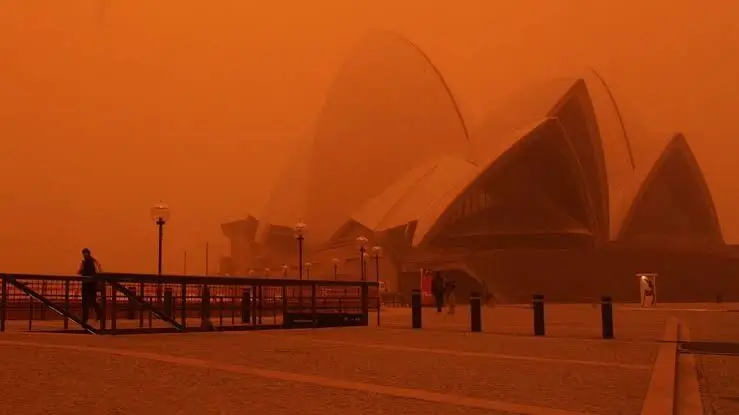🌫️ A Decade Later, the Dust Returns
On May 27, 2025, Sydney found itself once again enveloped in a thick, ochre haze, reminiscent of the infamous "Red Dawn" dust storm of 2009. The current dust storm, driven by strong winds and prolonged drought conditions in South Australia and western Victoria, has swept across New South Wales, significantly deteriorating air quality and reducing visibility in many areas.
📊 Air Quality Plummets to Hazardous Levels
Air quality across Sydney and surrounding regions has reached alarming levels. PM10 concentrations soared above 600 μg/m³ in Sydney, with the Illawarra region recording levels as high as 903.2 μg/m³. For context, typical PM10 levels in Sydney hover around 50 μg/m³.
The New South Wales Department of Health has classified air quality in several areas, including Parramatta North and western Sydney, as "hazardous" to "very poor."
🏥 Health Impacts and Public Advisories
Health authorities have issued urgent warnings, particularly for individuals with respiratory conditions such as asthma or chronic bronchitis. Residents are advised to:
-
Stay indoors and keep windows and doors closed.
-
Use air purifiers if available.
-
Avoid outdoor physical activity.
-
Seek medical attention if experiencing symptoms like coughing, shortness of breath, or chest tightness.
Emergency services have reported an uptick in asthma-related calls, indicating the immediate health impact of the dust storm.
🌍 A Broader Environmental Concern
The current dust storm is not an isolated event but part of a broader pattern of extreme weather conditions exacerbated by climate change. The Bureau of Meteorology has noted that worsening drought conditions in the western regions of NSW could make such events more frequent.
🕰️ Reflecting on the 2009 "Red Dawn"
The 2009 dust storm, dubbed "Red Dawn," was one of the most severe in Australia's history. On September 23, 2009, Sydney awoke to a surreal, red-tinged sky as a massive dust plume blanketed the city. PM10 levels peaked at 11,705 μg/m³, and PM2.5 levels reached 1,638 μg/m³, far exceeding safe thresholds.
The health impacts were significant, with a 23% increase in asthma-related emergency department visits and a 20% rise in respiratory issues overall. The event prompted the implementation of improved air quality alert systems and public health advisories.
📸 Visual Documentation
Sydney's iconic Harbour Bridge obscured by the dust haze on May 27, 2025.
📌 Conclusion
The May 2025 dust storm serves as a stark reminder of the environmental challenges posed by climate change and land degradation. As Sydney grapples with hazardous air quality and health advisories, the event underscores the need for sustainable environmental practices and robust public health infrastructure to mitigate the impacts of such extreme weather phenomena.
For real-time air quality updates, visit the NSW Air Quality Monitoring website.
